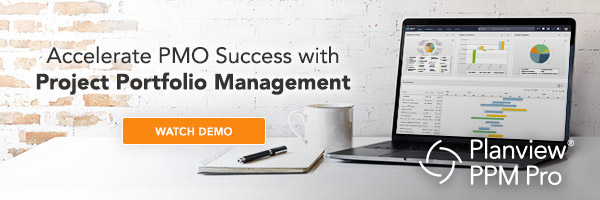
The following content is based on the whitepaper, “Bigger Than a Breadbox: 10 Tips for Better Project Estimates, Part 2,” written by Jerry Manas. For your reading convenience, we’ve decided to give it everlasting life here on the blog.
It is impossible to talk about project management without talking about risk. After all, projects are, by design, meant to undertake an endeavor that has a certain degree of variability and uncertainty. Otherwise, the endeavor would be a repetitive process, not a project. Risk management is an underutilized but necessary part of effective project management. At the very least, an early risk assessment should be done, and the risks that are considered “high probability/high impact” should be documented and planned for.
Before reading ahead, we suggest you catch up on the previous installments of this series for tips 1-6 to improve project estimates:
- Part 1: Improve Project Estimates and Escape Crisis Mode
- Part 2: Improving Project Estimates is all About Direction
- Part 3: Project Estimation Methods
- Part 4: It’s Time to Start Planning for Resources
Tip 7: Do You Feel Lucky Today? (Management Reserve and Contingency Reserve)
There are a defined set of methods for addressing known risks, including:
- Mitigation – reducing the probability and/or impact of the risk
- Avoidance – changing plans to completely avoid the risk
- Transference – transferring the risk to another party (e.g., insurance, fixed contracts, etc.)
- Passive Acceptance – taking a “wait and see” approach
- Active Acceptance – Accepting the risk, but having a contingency plan (a “Plan B” and/or having budget money set aside)
But there are also “unknown” risks, that aren’t identified in the risk planning process for whatever reason.
In any project, but especially in large complex projects, Management Reserve (MR) and Contingency Reserve (CR) are crucial aspects of project budget planning that speak directly to unknown and known risks, respectively. It’s a wonder why more organizations don’t leverage these valuable tools.
Management Reserve is a separate reserved budget (often 5-10% of the total project budget) for addressing unknowable events of emerging changes. It is not for addressing overruns or for erasing a negative cost variance (i.e., things taking longer than expected). Rather, it can be used for newly identified work that must be done, tasks that were missed in the original planning process, or rework due to unplanned circumstances. MR is typically controlled by management outside the project team. The project manager generally must seek approval for using Management Reserve for a justifiable reason.
Contingency Reserve is similar, but is for identified risks, and is a specific budget set aside for addressing probable risks should they occur. It should be estimated based on the cost of the probable risks in question. The project manager typically has full authority to use this reserve, provided it is tied to an identified risk.
Generally, the Contingency Reserve is included in the cost baseline, whereas the Management Reserve isn’t. To execute on a project budget without any type of reserve is tantamount to walking a tightrope without a net. Do so at your own (ahem) risk. The larger the project, the truer this becomes.
Tip 8: Eating the Elephant (Estimating Mega-Projects)
As the saying goes: How do you eat an elephant? One bite at a time.
For extremely large and complex projects, it is often a long and arduous process just to provide an estimate. Those who try often come up way off the mark, and then management is shocked to find that more funds are required later. For this reason, for mega-projects, it is a best practice to have a separate project for the estimate itself.
What? An estimate for the estimate? Yes, when it comes to mega-projects, successful organizations do exactly that. After all, on such a project, the estimating and discovery process itself can take weeks. And during those weeks, you’re consuming valuable resources. If this so-called preparatory work isn’t planned and estimated, it tends to be “off the radar” and can impact an entire project portfolio by sucking up valuable resources.
Once the “estimation project” is completed, there will be a far greater likelihood that the resulting business case and estimate for the ensuing mega-project will be fairly accurate. Just as important, the organization’s resources will have been working on planned, authorized work, and the resulting mega-project can be scheduled for when they’re available.
Tip 9: Why Have Just One? (Using Multi-Point Estimates)
We’ve already explored the concept of multiple tiers of estimates as more information is known (e.g. order-of magnitude, budget, and baseline estimates). But what if at each stage, we provided not one, but three estimates?
In the construction industry, it has long been standard practice to provide three estimates:
- Normal estimate
- Pessimistic estimate (10% above the normal rate)
- Optimistic estimate (10% below the normal rate)
This is not unlike offering a range, but it serves to draw attention away from a single number. After all, executives often remember the single estimate amount and ignore the plus/minus variability range given.
The above example, with an arbitrary 10% above/below is a rudimentary example, and minimally effective. But the point is that this three-variable method is acceptable to an industry with widely predictable components (in comparison to research or technology projects, for example), it would seem all the more reasonable to use a similar model for projects with even less certainty.
Going a step further, the PERT calculation we discussed earlier in the series [Pessimistic + Optimistic + (4*ML) / 6], offers a weighted average toward the most likely scenario, and is based on identified risks.
Again, the key to making PERT work is to base it on the probability of certain risks happening or not happening. In other words, tie your estimate to a real risk/probability assessment, not to a “hunch” based on personal intuition. Otherwise, most people will mentally create an arbitrary number for Pessimistic, Optimistic, and Most Likely estimates, often depending on which order they’re asked for them. The Most Likely estimate will often fall smack in the middle of the mental bell curve, which doesn’t reflect an assessment of the risks with relatively high probability.
Some experts propose an alternate, and perhaps simpler, approach, which is to offer a single estimate, but to use varying accuracy ranges based on multiple categories of risk. For instance, a project deemed “Average risk with moderate technical difficulty” (medium uncertainty) might warrant an accuracy range of 10-15%. A project designated as “Major Risks; Uncharted Territory” (extreme uncertainty) may warrant a 25-50% range.
In any case, it is useful to think beyond the typical single estimate model, and to consider using either a three-point estimate, a PERT estimate weighted toward Most Likely (assuming it’s based on a risk assessment) or selecting from multiple levels of accuracy ranges based on the degree of risk.
Now that we’ve covered the methods and importance of risk management, stay tuned for part six of this series, in which we will examine 6 reasons why projects are late. Want to continue reading this series? Click the links below to learn more tips to improve project estimates:
To learn how Planview can help your organization, register for a free demo of Planview PPM Pro today!






